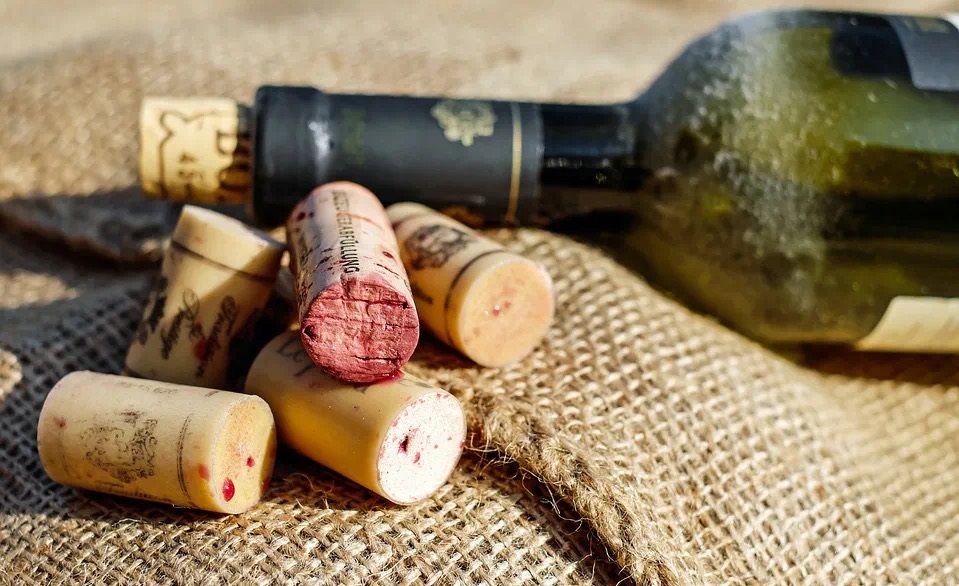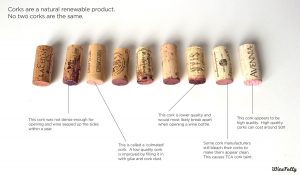MC Glass Bottle Company wine bottle manufacturer
MC Glass Bottle is China wine glass bottle manufacturer, supplies custom glass bottles. We also wine bottle wholesaler for 20 years. We carry a full range of empty wine bottles, such as Bordeaux and Burgundy. The color can be clear, antique green or amber. Choose from smaller wine sample bottles 187 ml to large premium styles to 1500 ml. Those glass wine bottles are available with a punt or standard base. They are idea package container for your craft home-brewed wine and those glass wine bottles can be used for gift, craft, or decoration.
Why use cork to seal a wine glass bottle
Most glass bottles are sealed with metal or plastic cap while a wine glass bottle is sealed with cork closures. When open a wine, people need to use a special metal mechanism, and which is not easy to operate. Why not choose a convenient way to seal a wine like crown cap? Using a natural cork to seal wine glass bottle is a tradition. It is unlikely corks will be replaced as the sealer of choice for the best wines. In part, there is the romance of removing the cork with that special delightful popping sound that lets you know, you are drink a wine. Transformed you into a wine enthusiast, your wine memories involve at least a little “cork”.
What is cork and History of wine cork
Wine corks are stopper used to seal wine bottles. They are typically made from cork (bark of the cork oak), though synthetic materials can be used. 68 percent of all cork is produced for wine bottle stoppers.
Like wine, cork comes from a living, breathing organism: Quercus suber, or the cork oak. Amidst the frenzied yearly cycle of the wine industry, these evergreen oaks move like sloths, slowly expanding and growing the bark, known as orange cork. With an average lifespan of 200 years, each tree can provide thousands of bottle stoppers when cared for properly.
though new advances in wine-making technology mean that screw caps and artificial corks can work as well as the natural stuff, cork trees and their history are critically important, especially as climate change affects wine regions, growing seasons, and life cycles globally.
Prior to the development of corks for bottle sealants, cloth or leather was the primary choice later followed by clay and sealing wax. It is reported that cork might have been used by the Greeks and Romans, although it was not the closure of choice.
In the late 1600’s when glass wine bottle can be created with an almost uniform shape and design, cork become the sealing material of choice. In the late 1700’s corks take place of glass wine stoppers. Though the glass cap work well and it is not easy to remove without breaking the wine bottle. Another reason wine corks become popular than glass stopper is it is a lot less expensive and easier to manufacture.
Why is cork used to close wine bottles
Most foods are best as fresh as possible. But the exceptions to this rule are the many wines that actually need some aging to taste their best. Winemakers know this, and work to control the aging process including decisions they make about how to bottle up their product.
It is interesting that cork and fine wine share another commonality. The oak tree can be harvested needs to be at least 25 years old before the material used to produce the cork stopper. This is the similar age of vines in many of the world’s best wine regions.
It is discovered that corks could sea the wine in the bottle by the 17th century and severely retards the oxidation process, allowing the wine to age and evolve slowly over time.
Glass is a hermetic material, meaning zero oxygen can pass through it. But all wine bottle closures admit at least a smidgen of oxygen. The actual amount is the key to a closure’s performance. A typical cork will let in about one milligram of oxygen per year. This sounds like a tiny bit, but after two or three years, the cumulative amount can be enough to break down the sulfites that winemakers add to protect the wine from oxidation.
By putting natural qualified corks will allow a minimal amount of oxygen into the wine. This is important because when air interacts with wine, it causes the wine eventually to oxidize. As we known, a minimal amount of air needs to interact with wine because that is how wines develop their mature, and secondary qualities as well as expel unwanted aromas. The best corks allow close to 1 milligram of oxygen to enter the bottle each year. This is just the right amount of air to remove the sulfites that were added in the bottling process to keep the wine fresh and to avoid the harmful effects of oxidation. This small amount of air is perfect for helping age-worthy wines develop their complexities while the tannins are busy softening.
Source: winefolly.com
Synthetic corks created from plastic have made vast improvements since they were first introduced. The initial synthetic corks were often deep purple and while they were produced to try resembling wine-stained corks, in fact, they looked more like rubber.
Today, that is not the case as they are created to look exactly like natural corks. The problem with synthetic corks is the lack of a perfect seal. In turn that allows more unwanted air into the bottle, causing the wine to oxidize. Worse, many of the synthetic corks have been known to impart a slight rubber or chemical smell, damaging the wine.
That is a chemist explains why corks matter when storing wine.





